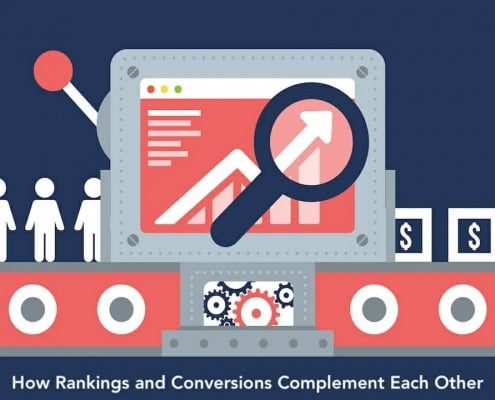Creating SEO-friendly URLs to Improve Rankings
SEO isn’t just about revolving around data to improve your SERP rankings. Some optimization factors require you to focus on simplifying your web pages, structure, and content favored by Google’s ranking algorithms.
Now, if you’ve even a beginner’s experience with SEO, you know about the on-page and off-page factors that need optimization. One such onsite element is your web page’s URLs.
Optimizing your web page URLs isn’t rocket science, and anyone with a basic understanding of SEO should be able to do it. Nonetheless, it’s an important foundation of SEO that you shouldn’t overlook to get your site ranked. The practice requires you to create SEO-friendly URLs that help Google and users understand what your web page is about, which further helps to rank that page against the incorporated keyword.
What is a URL?
URLs are web addresses that are used to locate pages and sites across the internet. The acronym stands for ‘Uniform Resource Locator’ and is key for the visibility of your web page and seamless navigation within your site.
Although a URL doesn’t reveal the contents or topics within a page, it’s still a valuable on-page factor that must be optimized for SEO. However, SEO experts are increasingly adding the topic of the web page on the URL to help users and search engines understand the content inside better.
A URL consists of the following elements:
| Domain Name | The domain name includes the website’s name and the top-level domain. Top-level domains include .coms, .net, etc. In some instances, the URL may also contain a sub-domain. |
| Protocol | Protocol refers to the scheme at the beginning of every URL, which guides the browser to request the resource. Standard URL protocols include HTTPS and HTTP. |
| Permalink | Permalink is the URL component that helps locate a specific web page within a domain. This is where your page title and keywords should be incorporated. |
Now that we know the main components that constitute a URL, you must be wondering how to make an SEO-friendly one?
An SEO-friendly URL means a well-structured website link that helps the user and search engines determine the contents inside that web page and helps your site rank against the targeted keywords.
With your page title clearly included in the URL, it’ll be easier for search engines and users to locate content on your page, thereby enhancing the user experience and guaranteeing surplus traffic to your site.

Tips to Create an SEO-friendly URL
While it’s important to optimize your URLs for the aforementioned reasons, you should also keep in mind that it doesn’t impact your SEO performance in the way content or links do. You simply need to ensure that you’re adhering to the best practice for an SEO-friendly URL structure.
Regardless of how much of a difference it makes, just look up the top results for any search phrase on Google; and you’ll see uniformity in the way they’ve structured their URL while also ensuring it has the informational value regarding the content within them. In addition, it doesn’t cost you any time, as other optimization factors do.
So let’s look into the basic tips that’ll help you to create a user and search engine-friendly URL that helps you to improve your organic rankings:
- Incorporate Focus Keywords
Remember what we told you about informing users and search engines about your content; this is what your focus keywords would include. Including the primary keyword in your URL will allow Google to index your web page for that keyword and inform users what they should expect once they visit the specific page.
This is the fundamental rule in onsite optimization, which you can practically see across all top-ranking websites. A URL with focus keywords particularly benefits your product or service pages, which helps to differentiate them from other pages on your site. This way, your target audience can make better purchasing decisions.
The practice is commonplace across e-commerce websites that categorize their product pages with the primary keywords included in the URL.
- Match URL with Page Title
The title of your web page should be relatable to your URL. Although they shouldn’t be identical, the reader should be able to connect the two. If your page title is long, skim it to use the necessary words in your URL so as to give your audience an idea of the content inside the web page by looking at the URL.
- Keep it Catchy and Concise.
It goes without saying that keeping your URL length short and attractive can increase your click-through rates (CTR) and enhance your website’s overall user experience. In addition, Google and other search engines also prefer a short URL structure that gets straight to the point.
Google often considers long URLs as spammy, negatively affecting your rankings. Short URLs are almost self-explanatory and highly readable for search engines and your target audience. The shorter your URL, the easier it is for search engine bots and humans to understand what your content is about.
Shorter URLs are also more shareworthy on social media and other user-generated content platforms, making it easier for you to build backlinks. The shorter it is, the easier it is to read.
Having said that, you should still ensure that your URL isn’t too short with little informative value and inconvenient for building directories.
- Ditch the Special Characters
Special characters and symbols aren’t SEO-friendly and may end up resulting in broken links. A typical example would be the ‘&,’ which isn’t recognized by Google. The search engine doesn’t pick up special characters like the hyper sand, @, #. Even uppercase letters can create problems with your URL, so it’s best not to experiment while creating an URL that is SEO-friendly and highly readable at the same time.
- Don’t Use Stop Words.
Stop words include words that hold sentences together, such as ‘and,’ ‘the,’ ‘but,’ etc. Stop words are not just ignored by search engines like Google, but they also make your URL unnecessarily lengthy and, in some cases, even confusing.
For this reason, don’t simply adopt the auto-generated URL by a CMS; tweak the URL to make it more shareable and professional, which helps in improving your search engine rankings.
- Skip the Date
Regardless of whether your web page consists of information relevant to a particular year, don’t add dates to your URL. While there’s nothing wrong with adding dates, you’ll find it really difficult for those topics to be relevant over time.
Content creators who create content based on a cluster of topics will have to constantly update the information so that it stays relevant. As you can see, adding dates means unnecessary complications that one can easily avoid.

Finding Keywords for an SEO-friendly URL
Finding the right set of keywords is the main mantra of an SEO-friendly URL. All the web pages of your site that you want to be ranked should contain the primary keyword, which helps search engine bots to categorize the page.
Selecting the focus keyword for your URL is the same as finding the correct phrases for creating the overall content. Three factors come into play here:
- The phrase should be relevant to your niche or topic,
- The term should have a high search volume, and
- The phrase should have low competition
While the first point is entirely deductive, the second one, which refers to high search volume, means that people should be searching for that phrase online. With more competition, it’s more challenging to rank for those keywords. Similarly, low competition means how many of your competitors are targeting the said keyword.
Various online tools can help you find the right set of keywords that are relevant to your industry and can be included in the URL. Google Keyword Planner, SEMrush, and ahrefs are some popular keyword tracking tools that not only help you identify your focus keywords but also the related keywords.
SEO-Friendly URLs can Improve your Rankings.
SEO is all about making small efforts that together contribute towards its success. An SEO-friendly URL won’t guarantee any ranking improvement alone, but it’s a small part of achieving the best from your website and content that ultimately helps you dominate search results.
As a whole, your prime focus should be on building quality content, acquiring relevant backlinks, and ensuring seamless user experience to be favored by Google and other search engines. And while creating SEO-friendly URLs is a good practice, you shouldn’t spend too much time on it.
If you’re looking for SEO experts to help you with gaining visibility for your website, Hawaii SEO Web Design specialists can help. We’re the leading SEO and digital marketing experts in the IS with the proven expertise of bringing success to all our clients. Contact us today to discuss your SEO and digital marketing needs.






